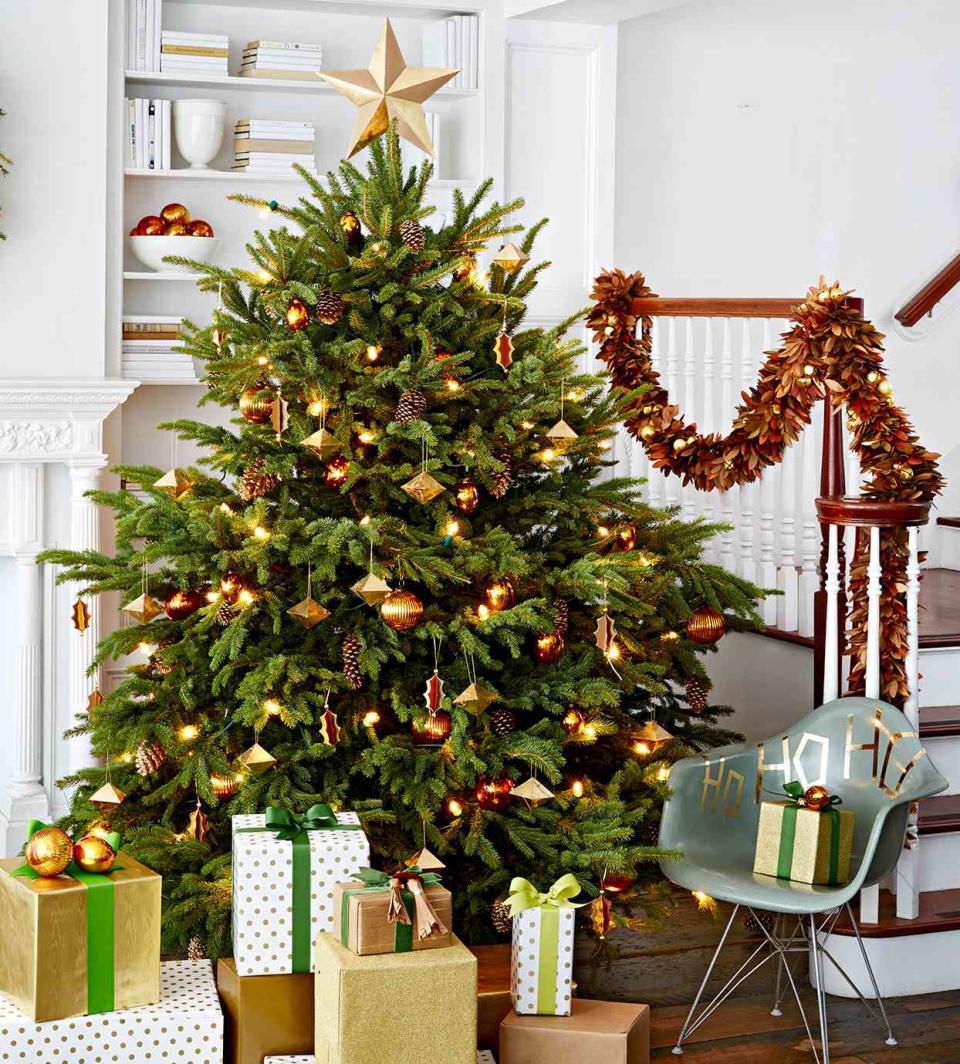How Long Does a Christmas Tree Last? 5 Tips for Keeping a Real Tree Alive
Learn simple ways to extend the life of your Christmas tree this holiday season.

The adventure of going to a local farm or tree stand to pick up a fragrant fir brings joy to many and reluctance to others. After all, buying a live Christmas tree has its pros and cons. And without proper care, it will dry up before the end of the season. So, the question is, what can you do to keep your tree alive longer? Here, we share pro tips for the best possible results.
How long does a Christmas tree last?
How long your Christmas tree lasts depends on how well you take care of it. If it is kept well-watered, a Christmas tree can last around four to five weeks before drying out. You can tell you’re doing it right if the tree doesn't shed its needles or bow under the weight of your ornaments. The species of tree also contributes to the tree’s lifespan. For example, fir and cypress can last up to five weeks, but pine and spruce tend to make it only about two or three weeks.

Tips for Keeping a Real Christmas Tree Alive
1. Choose a Healthy Tree
Start by choosing the right tree. A healthy tree tends to have fewer brown needles. Also, if you run your hand along a branch and tug gently, very few leaves or needles should come off. Except for spruces, which typically have sharp and stiff needles, the needles of a fresh tree should feel soft and supple rather than brittle.
:
2. Water It Well
Water is the most important element to keeping your tree fresh and alive. Place the tree in water as soon as you get home. Get a stand with a generously sized built-in reservoir to keep the trunk submerged. “Add free water as the levels decrease daily from the heat of being inside a home,” says Dennis Sons of Tennessee Nursery.
Additionally, Sons suggests the following solution. “Add ½ cup of granulated sugar to 5 gallons of water with ½ cup of vinegar. Sugar gives nourishment and also preserves the sap in the tree to keep it alive longer. Vinegar acts as a pH stabilizer and also protects the tree stem from unwanted rot and bacteria.” Check the water level daily and replenish it as needed.
3. Trim the Trunk
When you cut a tree, sap will form around the base of the trunk within hours. This natural defense mechanism protects and seals the cut, but the sap also prevents the tree from absorbing the water it needs to stay alive. Around eight hours after cutting, water absorption might slow, so if you’re cutting the tree straight from the farm, act fast to get it home. If you’re buying a pre-cut tree at a store, ask them to shave off 2 centimeters of the trunk before you take it off the lot. If you’re handy, you can do it yourself at home before placing the tree.
4. Buy a Fitting Stand
If the tree doesn’t fit the circumference of the stand you own, you might be tempted to whittle down the trunk to fit the stand. However, the outer layers of wood are very effective in absorbing water, so instead of chopping them off, opt for a bigger tree stand.
5. Be Cautious of Heat Sources
While a warm, cozy room is appealing to people, it is less so to a live Christmas tree. In the face of excessive warmth, it will shed its needles to conserve moisture. Live trees dry out quickly if placed near a heat source, including direct sunlight, skylights, furnaces, and electrical devices. Additionally, warm, stagnant water can grow mold.
Sons suggests adding pennies to the water since copper acts as an acid enhancer and reduces fungus and mold.
Also, keep the room's temperature low, and use smaller lights on the tree. Swap standard lights with LED Christmas tree lights, which don't get as hot. To slow the drying process, always turn off the lights when leaving the room.
:

Christmas Tree Safety Tips
When trees dry out and lights become too hot, it can cause a fire hazard. Never leave your Christmas lights on for hours unattended. Also, ensure that all the bulbs and cords are in good condition, which means no fraying or broken light covers.
Learn fire safety basics and make sure everyone in your household is observing safe care of the tree. Keep the tree well-watered and cool. Fresh water and timely trunk care extend the life of your trees by days, if not weeks.

